By Wilhelm R. Gehlen & Don A. Gregory
Letters home provide us with a glimpse into the daily lives of soldiers during the best and worst times. German soldiers of World War II wrote them by the hundreds of thousands, and if anything got through the battle lines the mail did. Not even the Gestapo could randomly search military mail trucks, and the soldiers knew it. So they wrote what they experienced. Feldpost letters from the Eastern Front tell the true story, from the virtually unimpeded advances during the first year to the slow and decimating retreats back to Germany that ended the war.
On June 22, 1941, the code words “Wotan” and “Dortmund” launched an 1,800-mile-long wall of German soldiers, numbering some four million, into Soviet-occupied territories. The world held its breath and waited. It is still the largest movement of men and matériel in a single wartime operation—10 times that of D-Day. The invasion would have occurred months earlier if it had not been for Italy’s adventures in Greece, which required Germany’s immediate attention. Nevertheless, Soviet Russia was to be destroyed in months if not sooner, and Hitler could then turn his attention back to Great Britain.
The British had already been at war with Germany for almost two years, and even with relentless Luftwaffe bombing had not collapsed on Hitler’s schedule. Meanwhile, Soviet Premier Josef Stalin was taking full advantage of Hitler’s on again off again trade deals, mostly involving Soviet grain and oil for German military technology and equipment. The Germans had already modernized Soviet air capability before the war in an attempt to hide their own research and development from the rest of the world. As a result, the Soviets had an air force, but the Germans knew exactly what they had. They also had three times the number of German tanks, mostly early models though, which were no match for fast, modern German panzers and tank destroyers.
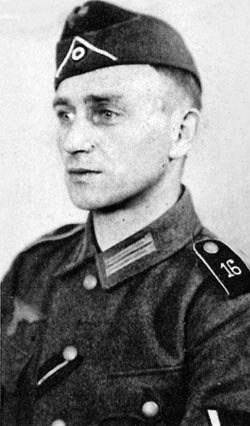
In late August 1942, shortly before noon on a hot day near a destroyed slaughterhouse in the northern Russian city of Demjansk, a long line of German soldiers queued up in front of a field kitchen for a mess tin of thick pea soup. It was not the kind of day for soup with the heat and all, but soldiers do not complain when the food is good and there is plenty of it. Nearby in an unfenced yard two German Sturmgeschütze assault guns were parked. The crews, with mess tins in hand, gathered at the end of the line. The chef in charge of the kitchen didn’t mind; there was plenty for the visiting company.
Obergefreiter (Corporal) Lorenz Gehlen, the driver of one of those assault guns, finally got close to the front of the line and asked the young private in front of him, “Say, what outfit is this anyway? We were in Cholm until we got orders last night to move out.”
The reply came, “We are the 30th Pionier (Pioneer) Battalion, formed in Lübeck in ’37, attached to the 30th Infantry Division, and the best in the Wehrmacht, Corporal.”
“Well, I don’t doubt that. Without the Pioneers, none of us would get very far in this godforsaken place.”
The German Army called its various combat engineer battalions Pioneers. They were trained as both assault troops and construction workers and performed either duty as required. These jacks of all trade were skilled in destroying or traversing anything in the way of advancing forces while at the same time supporting the infantry during battle.
“When we got a whiff of something good to eat coming from your field kitchen, we thought we’d invite ourselves to lunch. You wouldn’t happen to know a Private First Class Mattes Hansen would you? He’s in the 30th last I heard.”
“No, I don’t, but you can ask Unteroffizier (Sergeant) Dalli sitting over there. He knows all the Pioneers from Demjansk to Starija-Russa. We’ve got 430 men in the 30th alone, and he knows the names of every one of them. I don’t know how he does it.”
After getting a tin of soup and a good sized piece of bread, Corporal Gehlen strolled over to Sergeant Fritz Dalli and saluted smartly, a bit too smartly for being that close to the front line. A well-trained German soldier saluted everyone of higher rank, and the corporal did it without thinking. “What’s on your mind, Corporal? And keep the saluting to yourself. Ivan knows a salute when he sees one, and I intend to go home alive.”
“Sorry. I’m Corporal Gehlen of the 184th Sturmgeschütz and I’ve heard that you know about every Pioneer in the area. My brother-in-law joined your battalion in 1938, and I thought you might remember him. He was living near Lübeck then, and the last time the two of us got to spend much time together was at Easter in 1939 when we were both on furlough.”
“What’s his rank and name, corporal?”
“Oberschütze (Private First Class) Mattes … I mean, Mathias Hansen.”
“Yes, he’s with us, 1st Company. He’ll probably be here shortly if you want to wait. Who did you say you were? Where are you from?”
“Corporal Lorenz Gehlen from the Krefeld-Viersen, Mönchen-Gladbach area in the Lower Rhine.”
The sergeant pointed toward the assault gun. “You drive that thing, Corporal?”
“I sure do, when I’m not in charge of the gun.”
“It’s an outstanding heavy weapon, and I bet it plays hell with Ivan’s tanks. What did you do before the war?”
“I drove an electric streetcar; the No. 9, from Krefeld to Süchteln and back.”
“Well, I guess the Wehrmacht thought if you could drive a streetcar, you could drive an assault gun. I never heard of Krefeld or Süchteln. I come from Husum in Holstein, and we don’t have streetcars there.”
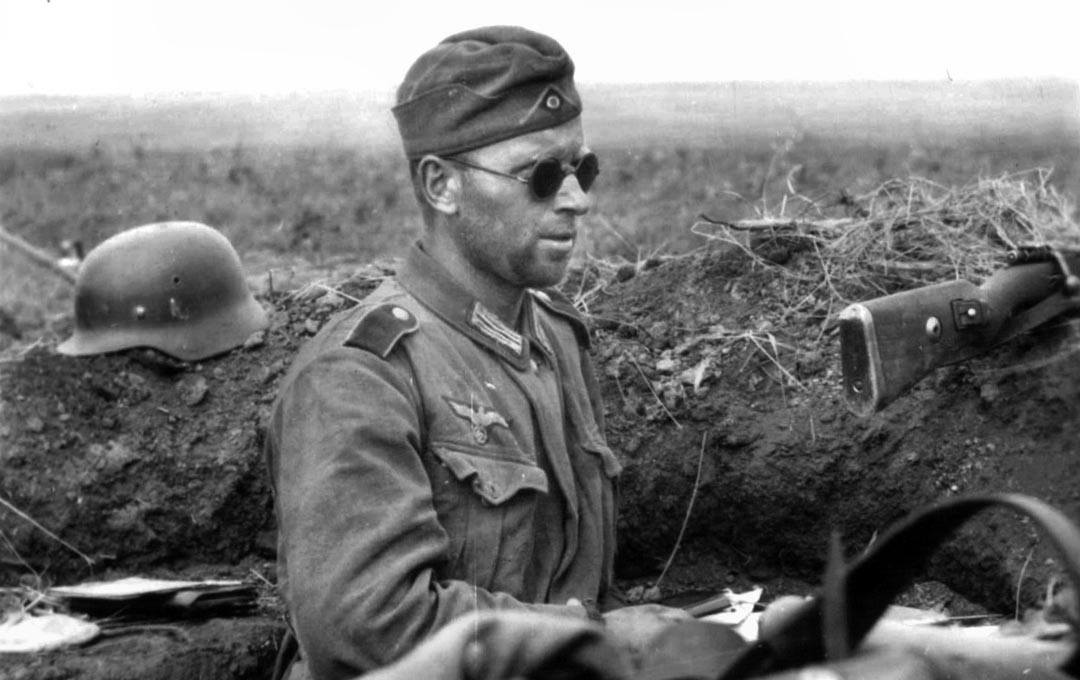
A dark-haired soldier about 30 years old came toward them with his mess tin in his hand. “There’s your man corporal. Over here Hansen,” he yelled at the man. “There’s someone here to see you. It’s not your wife, but he claims to know you—and your wife.”
Hansen’s eyes lit up when he recognized the familiar face of the man talking with his sergeant. “Well, if it isn’t Locht, my favorite brother-in-law.” Only people who knew Lorenz well called him Locht. “I would’ve expected the Devil himself before you.” The two men shook hands and tried to talk at the same time.
“What brings you here? The fighting’s about over.” The words hadn’t left Hansen’s mouth when an unmistakable sound filled the air. Everyone took cover as a Russian Ilyushin IL-2 Sturmovik ground-attack aircraft passed over and dropped its load. The “Sewing Machine” as everyone called it, dropped a few bombs, but they fell on a nearby cemetery, killing those who were already dead and doing no further damage.
“Even at mealtime, Ivan won’t leave us alone,” a soldier grumbled as he walked past.
“Where are you headed, Locht?”
“We came up from Cholm on our way to Kalinin, but Unterfeldwebel (Staff Sergeant) Kirchner decided we should stay here for the night. He’s one hell of a soldier; knocked out 12 T-34s in an hour last February. He knows his business, and Ivan better stay out of his way.”
“You talking about Wachtmeister (Sergeant Major) Kurt Kirchner? I’ve heard of him, but I thought he was with Sturmgeschütz Abteilung (Battalion) 667.”
“No, it’s a different Kirchner, but our staff sergeant will be just as famous as him someday.”
The two men sat on empty panzer mine boxes, ate their supper, and lit up their cigarettes. The last time they had time together was for a beer on White Sunday, a week after Easter in April 1939 when Lorenz’s son, Willy, went for his first communion. Because Lorenz and Mathias were Catholic, they were both granted leave. At the time, White Sunday was almost as big a celebration as Easter in the Lower Rhine.
Mathias, or Mattes as everyone called him, had married Lorenz’s younger sister, Kaline, in the late 1920s, and a son, appropriately named Hans Hansen, was their firstborn. A girl, Annemarie, was born in 1937. A year later Mattes found work in a construction yard near Lübeck and registered as a temporary resident there. The family was living there when he got his call-up papers from the Wehrmacht. He was given 10 days home leave to pack up and say goodbye before reporting to the Pioneer Kaserne in Lübeck on September 1, 1938, a year to the day before the invasion of Poland. Mattes and Locht did meet briefly once more before their long separation, at Christmas in 1940.
In 1939, Mattes went to Poland and Locht was sent to the Wehrmacht range in Hillersleben near Magdeburg to learn how to drive infantry vehicles, and then to Ohrdruf for more training. Operation Barbarossa swallowed both men, but Russia was a big country and their paths did not cross until Demjansk. Mattes was a skilled Pioneer, and Locht was an assault gun operator in the 184th Sturmgeschütz Abteilung. The 184th fought in many battles with the Russians, especially in the winter of 1941-1942 around the Cholm Pocket.
The 184th was formed at Zinna near Jüterbog in August 1940 and designated as Sturmartillerie-Abteilung 184 with three batteries, and later, in February 1941, as Sturmgeschütz Abteilung 184. It was never given division status but was under the command of various armies or even army groups and sent to divisions when needed as a mobile artillery or antitank unit. In January 1942, it was ordered to the Cholm area and attached to XXXIX Corps under the Sixteenth Army of Army Group North. In July of that year, it was transferred to the 30th Infantry Division of II Army Corps within the same army group and eventually trapped with II Army Corps in the Demjansk Pocket. It was March 1943 before the surviving members of II Corps were evacuated.
Sometime after midnight that night in Demjansk in August 1942, the two soldiers parted. The 184th was scheduled to advance toward Kalinin, and Mattes’s pioneer unit had some bridging operations to attend to across the Pola River, a tributary of the Lovat River, which runs into Lake Ilmen.
After their chance meeting in Demjansk, Mattes and Locht never saw each other again. Kaline received a telegram in late September 1942 saying that her husband had been killed in action in Russia and that his remains had been buried near Starija-Russa. No other details were available.
Locht came home in July 1945, walking most all of the way. He had been captured in Denmark, a world away from Demjansk and another world away from home. He had been in a hospital in Denmark recovering from serious wounds received on August 28, 1943, near Starija-Russa, just south of the Estonian border. Before he was wounded, Locht and the 184th were on the move to Selischarevo in the Waldai Hills when his battery was surprised by an antitank gun, which opened up on their lead vehicle.
Locht was in the following Sturmgeschütz, not driving at the time, but in charge of the gun. He noticed a small church with an onion dome on a hill half a mile away. The Russians had hidden the 37mm gun in the church entrance. He aimed his 50mm cannon at the church and prayed that God would forgive him for firing on His house. One shot, and the position was destroyed. At Welikije Luki, however, Locht’s crew was not so lucky. The gun carriage sank into a swamp near the river and was temporarily lost. It was days before Locht’s Sturmgeschütz was extracted.
Kaline, an early war widow, moved away from her hometown with her children and remarried in 1950. Locht’s son, Willy, met Annemarie once in 1966 during a visit to Germany from the United States, where he had come to live after growing up and serving a stint in the French Foreign Legion. Annemarie could not remember ever seeing her father. Kaline was happily married, and Mattes was forgotten. Kaline died in 1974, and Locht’s family lost track of all the relatives. Annemarie and Hans were never heard from again. Locht died of a fall in 1976.
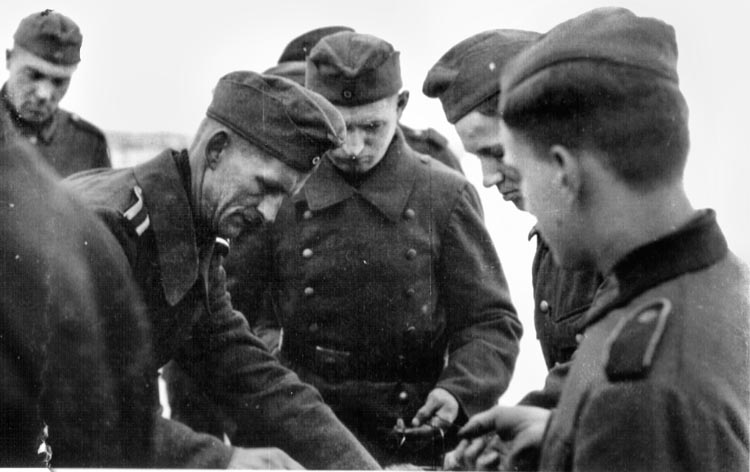
Years later, with the advent of the personal computer and the Internet and the collapse of the Soviet Union, information began to flow more freely from behind the former Iron Curtain. International war grave commissions at work in many countries around the world began seeing to the decent burial and registration of millions of war dead, even in the vast reaches of the former Soviet Union.
The Volksbund Deutsche Kriegsgräberfürsorge (German War Graves Commission) is responsible for the maintenance and upkeep of German war graves in Europe and North Africa. Its charter is the acquisition, maintenance, and care of German war graves, assisting nearest relatives of the fallen, preserving the memory of the sacrifices made, and promoting educational outreach programs throughout Europe. Today the commission is caretaker for about 2.6 million dead in more than 800 military cemeteries in 45 countries. The commission’s personnel include about 8,000 volunteers and 571 paid employees.
With the end of the Cold War, the commission gained access to gravesites in Eastern Europe where many German soldiers had lost their lives in World War II. Since 1991, more than 500 cemeteries where the dead of both world wars are interred have been established or restored in eastern, central, and southeastern Europe. More than 750,000 sets of remains have been buried in new graves.
One cemetery was created close to the Pola River, near the village of Korpowo, halfway between Demjansk and Starija-Russa. When commission personnel arrived in the area in 2001, they had an enormous task ahead of them. Most graves dug in Russia during the war were shallow with only birch crosses and steel helmets to mark their locations. The helmets had long since been plundered by souvenir hunters or turned into food bowls for pets and livestock by the poor local people. Commission volunteers in the region between Demjansk and Starija-Russa had to first find evidence of burial sites and then find any surviving witnesses who knew or had seen anything from the summer of 1941 to early 1944. About 33,000 German soldiers have now been buried at the Korpowo site, and it is estimated that eventually 50,000 will be interred there.
And Mattes? Well, a babushka living in a sod hut not far from the Pola had seen quite a bit of the action there during World War II. She watched as the 30th Pioneer Battalion attempted to build a bridge on September 6, 1942, and she saw them attacked by Russian infantry. Several Germans were killed, and they were buried by their comrades near the river. The woman tended the graves even during the communist cleansing that went on for years after the war.
When commission personnel arrived asking about burial sites, this 90-year-old woman took them to the graves. The remains of Corporal Mathias Hansen were exhumed and identified. He now rests in the German War Memorial Cemetery of Korpowo on a lonely stretch of road between Demjansk and Starija-Russa. In March 2014, his closest living relative, Locht’s son Willy, was notified in a letter from the commission.
He was not forgotten, not by his countrymen and not by his nephew, Willy Gehlen.
Author Don A. Gregory writes frequently on World War II topics and resides in Huntsville, Alabama. Wilhelm Gehlen researched letters and other family memorabilia for this story.
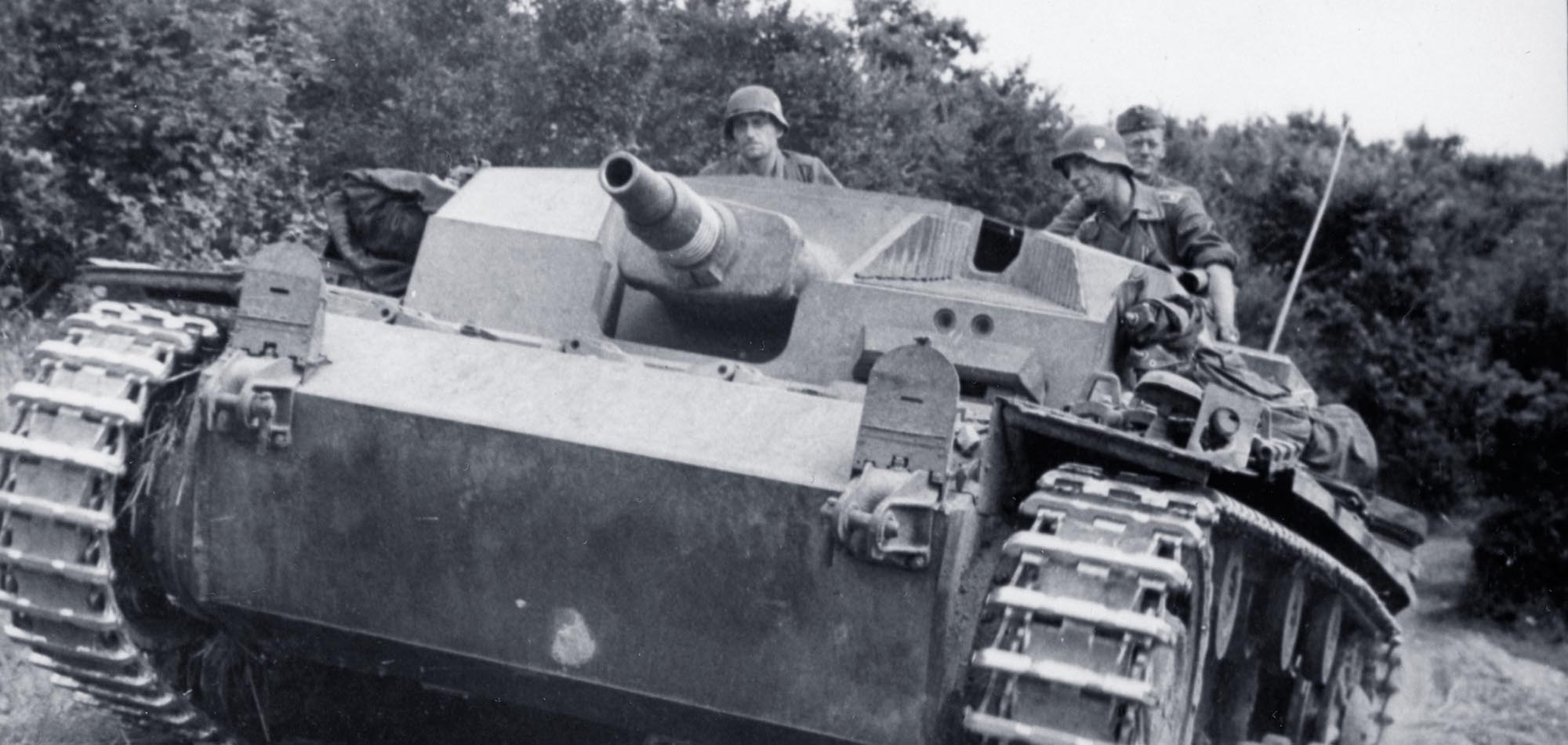
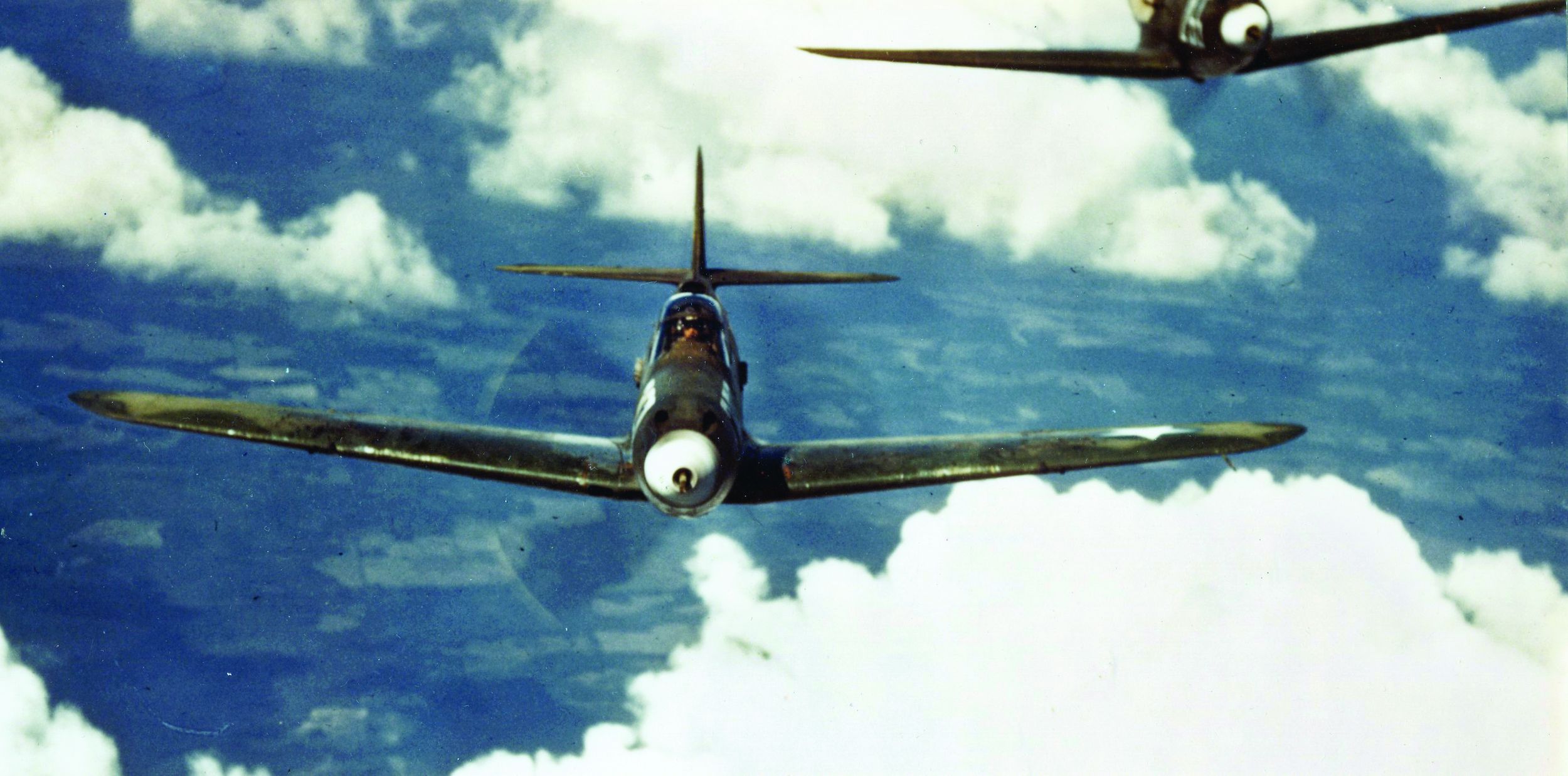
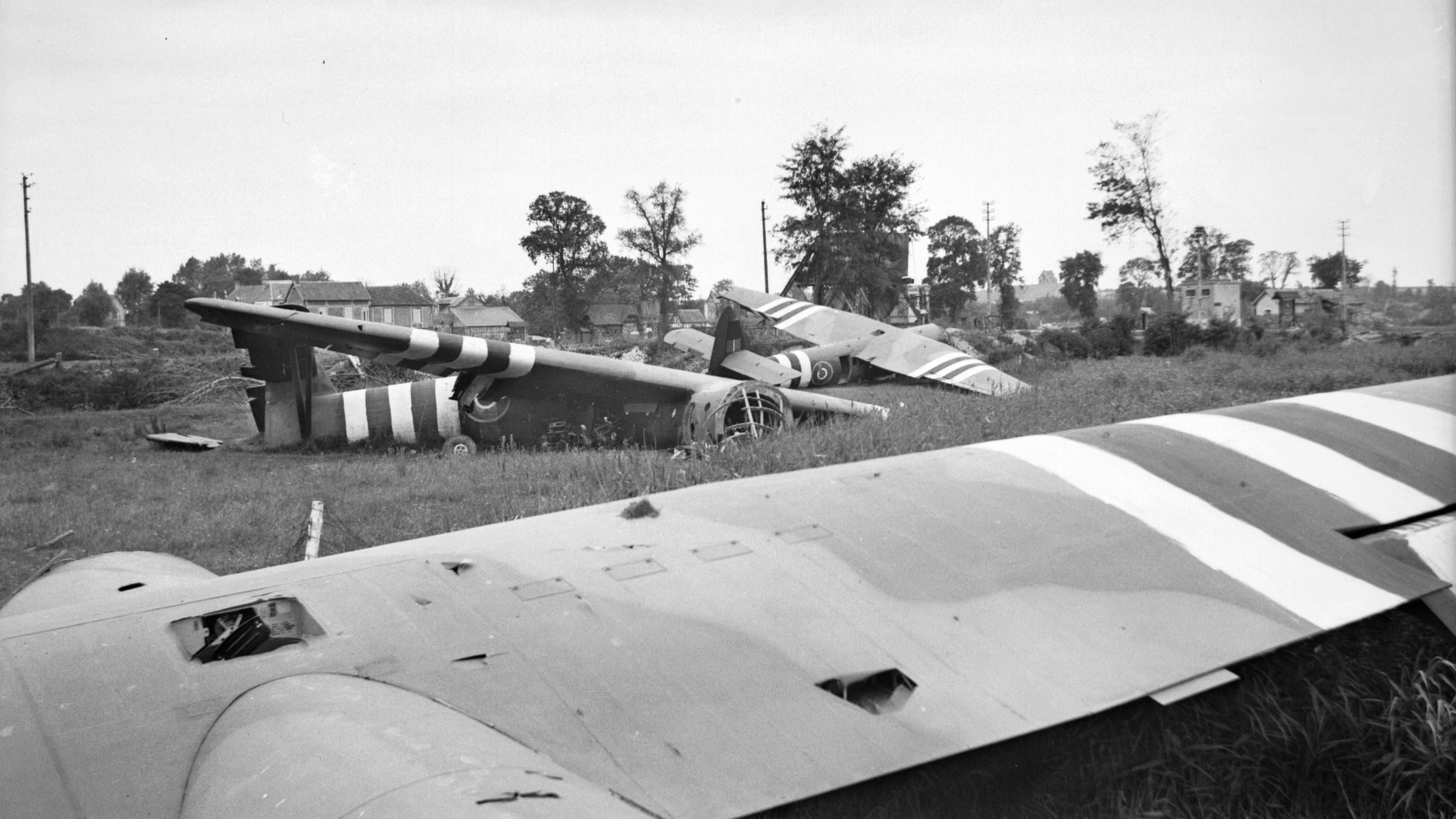
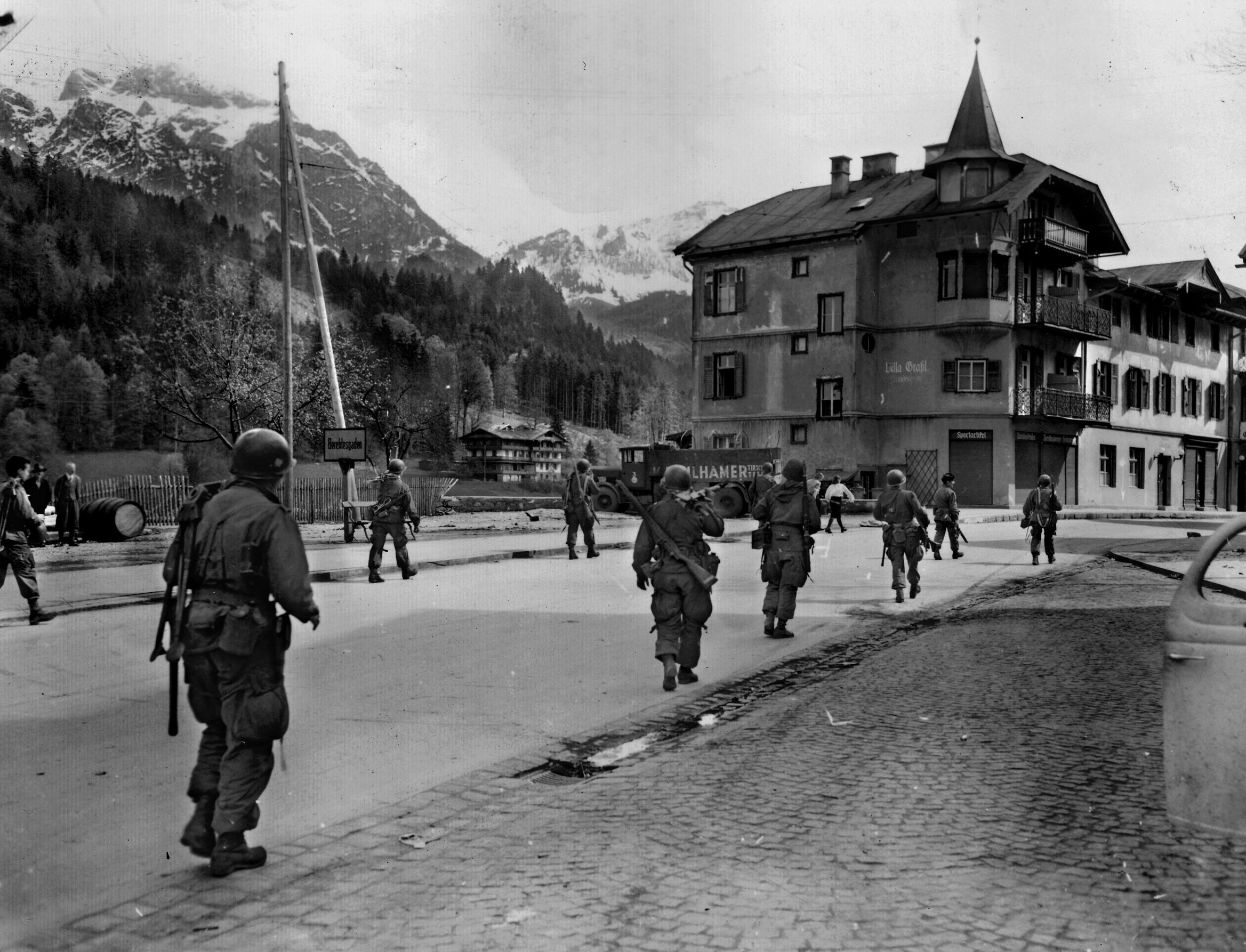
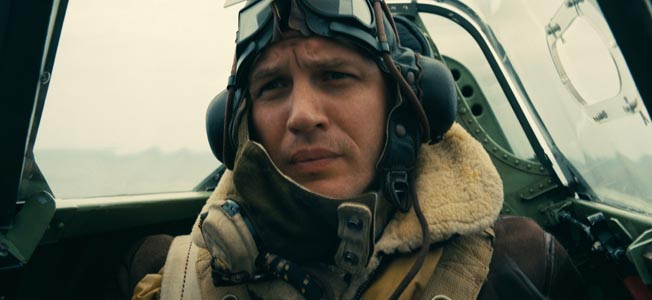
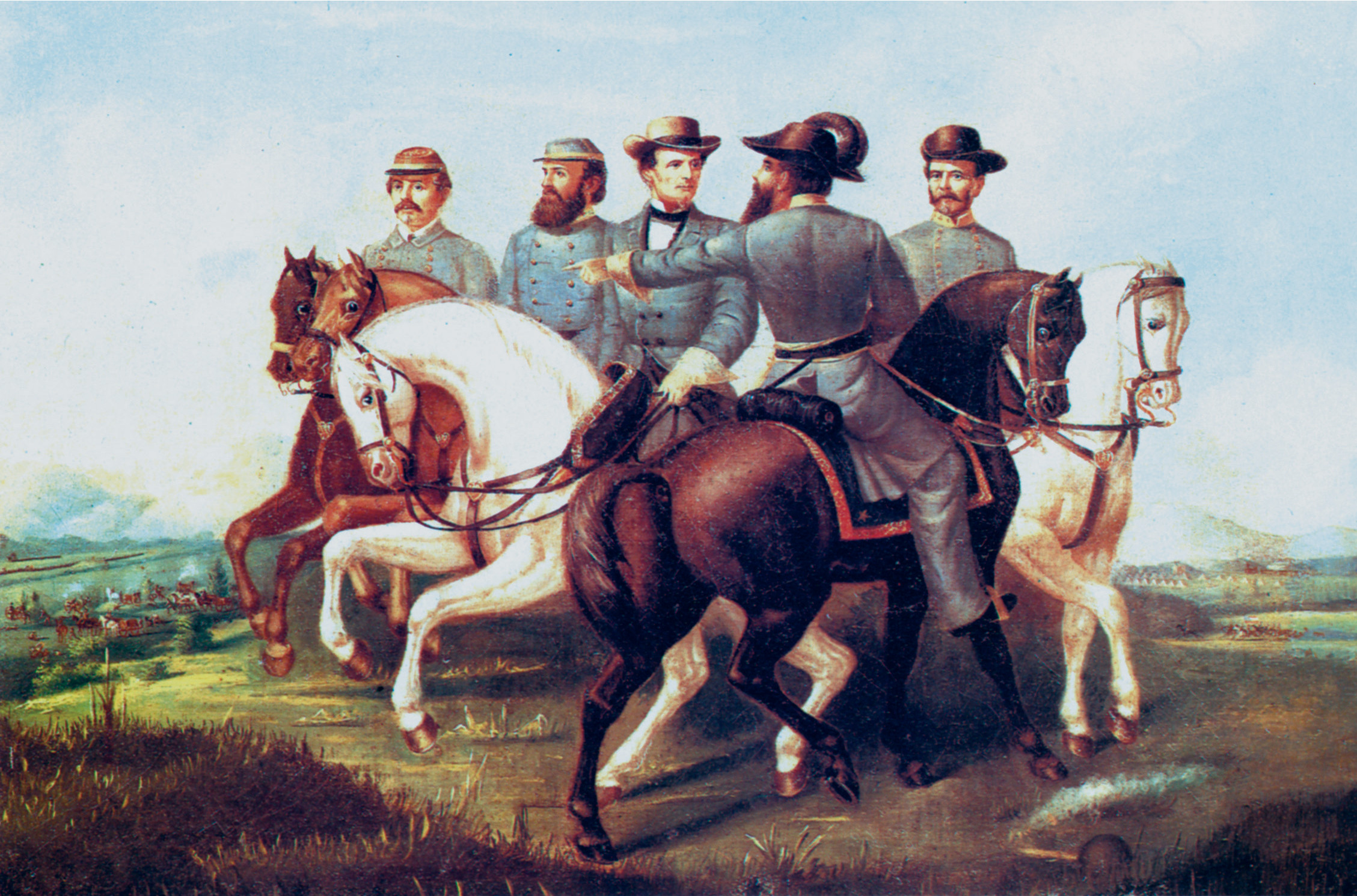
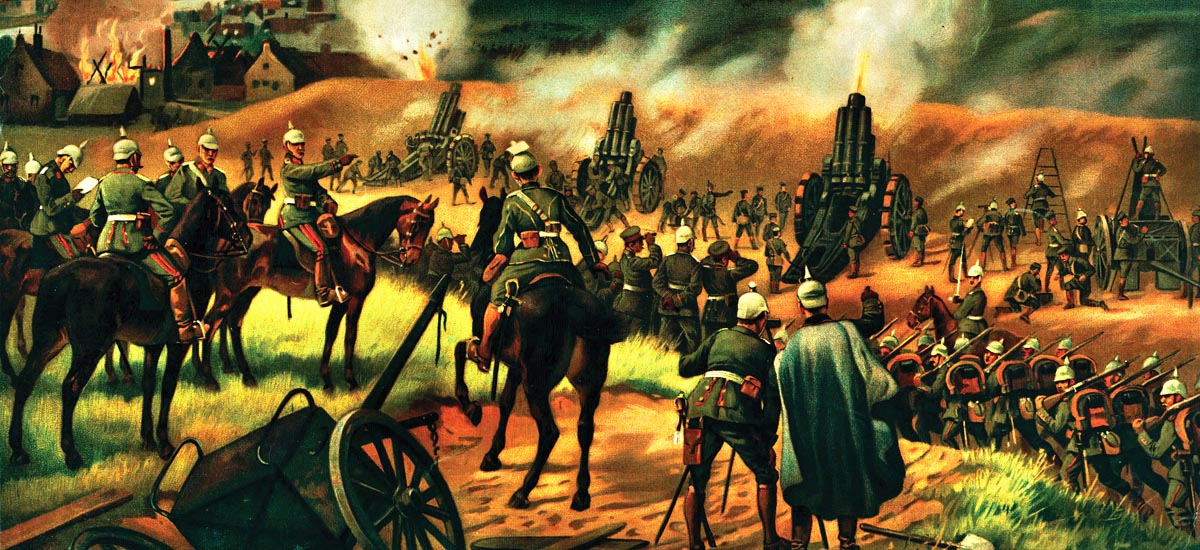
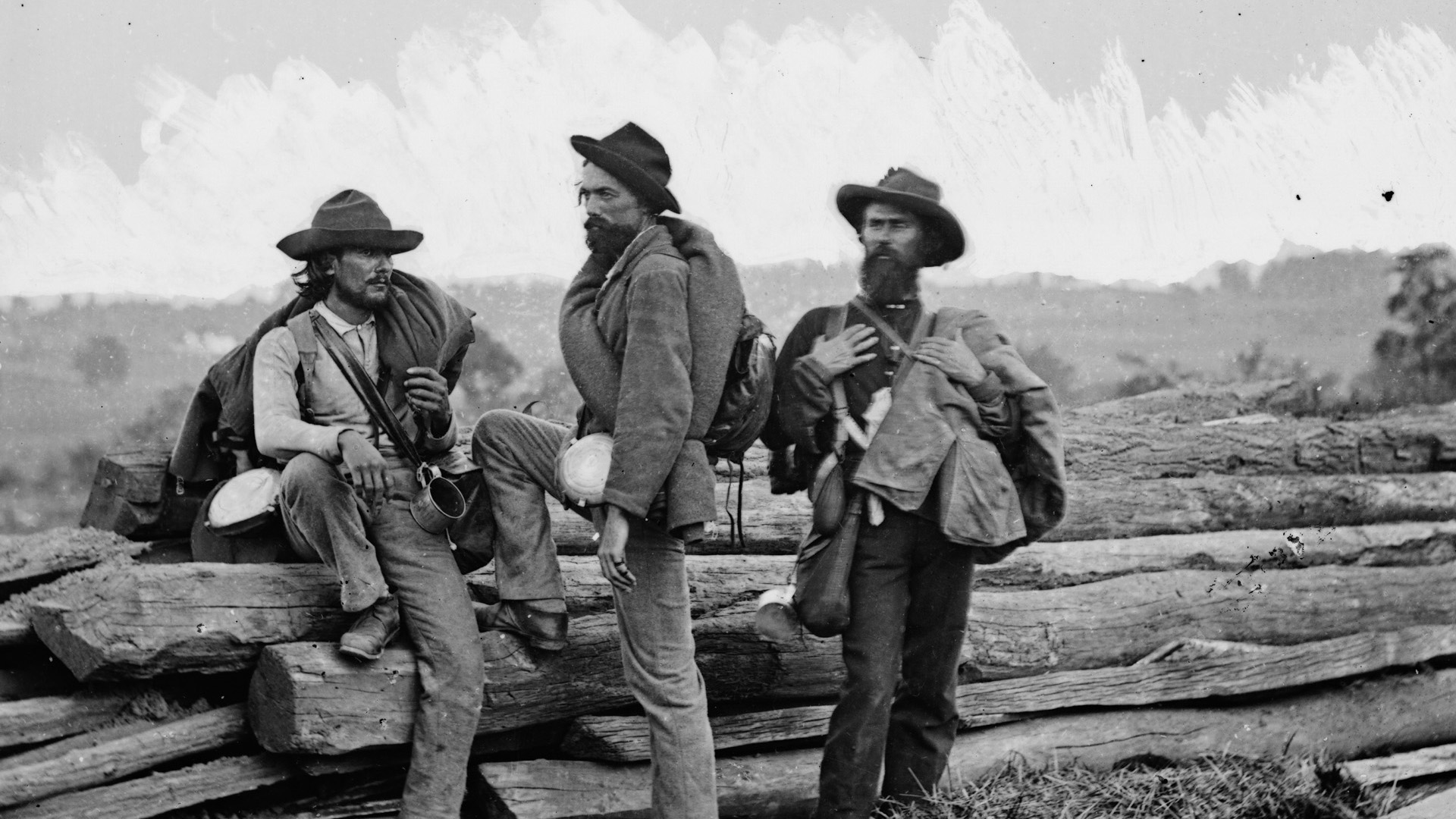
Join The Conversation
Comments
View All Comments